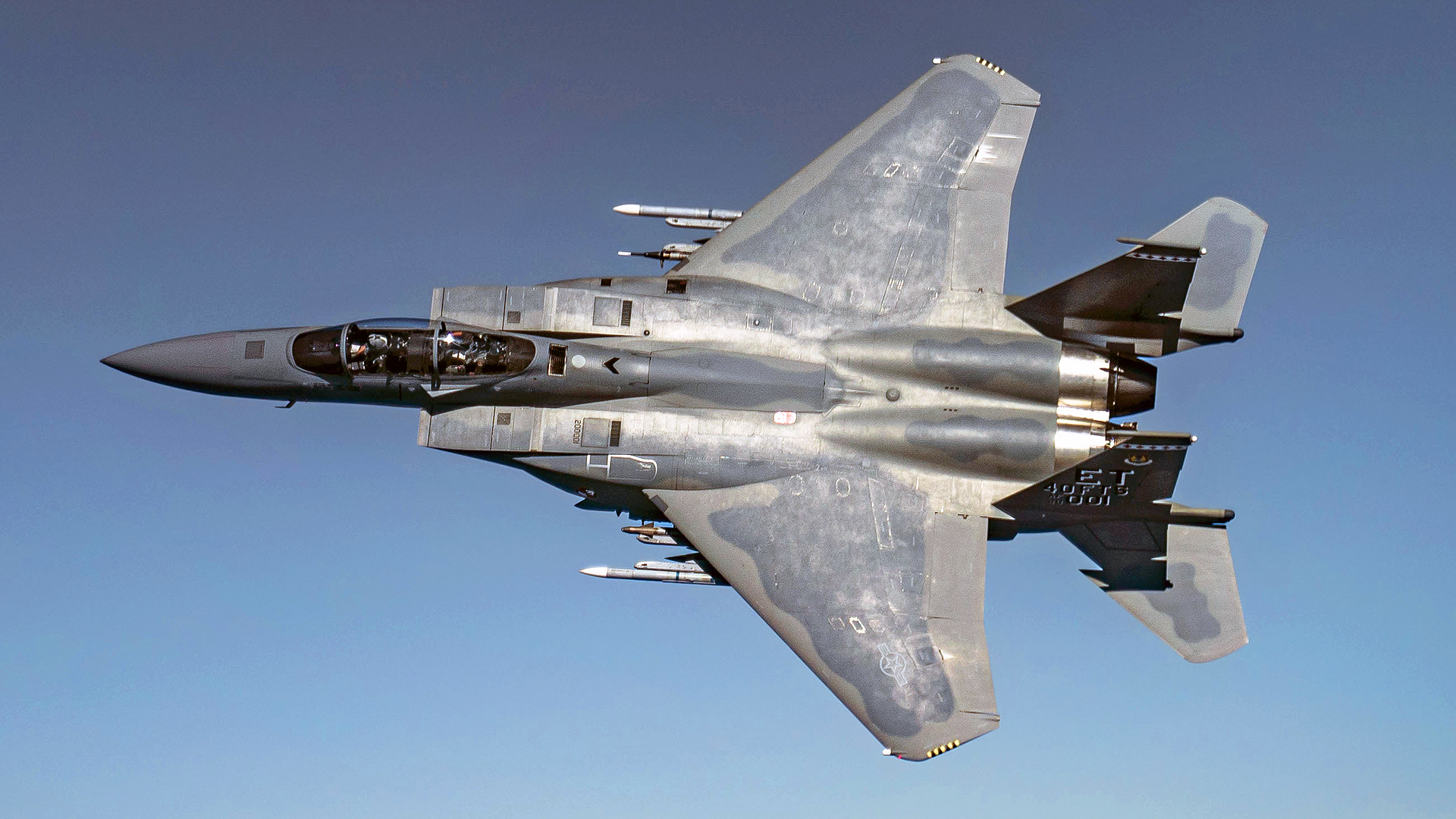Among a number of firsts as a result of Iran’s reprisal attack on Israel, including what could be the largest single ballistic missile barrage of all time and the largest number of anti-air missile engagements in a single operation, the USAF’s F-15E Strike Eagle’s incredible performance stands out. Forward-deployed F-15Es from units based at RAF Lakenheath in England and Seymour Johnson Air Force Base in North Carolina played an outsized role in shooting down more than 70 Iranian drones. In doing so, the case for procuring new F-15EX Eagle IIs was bolded, highlighted, and underlined, as were questions about why the USAF plans to retire half of its relatively small to begin with, and always in-demand, existing Strike Eagle fleet.
Simply put, if you need to defend a geographical area from a hoard of incoming cruise missiles and drones, the F-15EX is your jet.
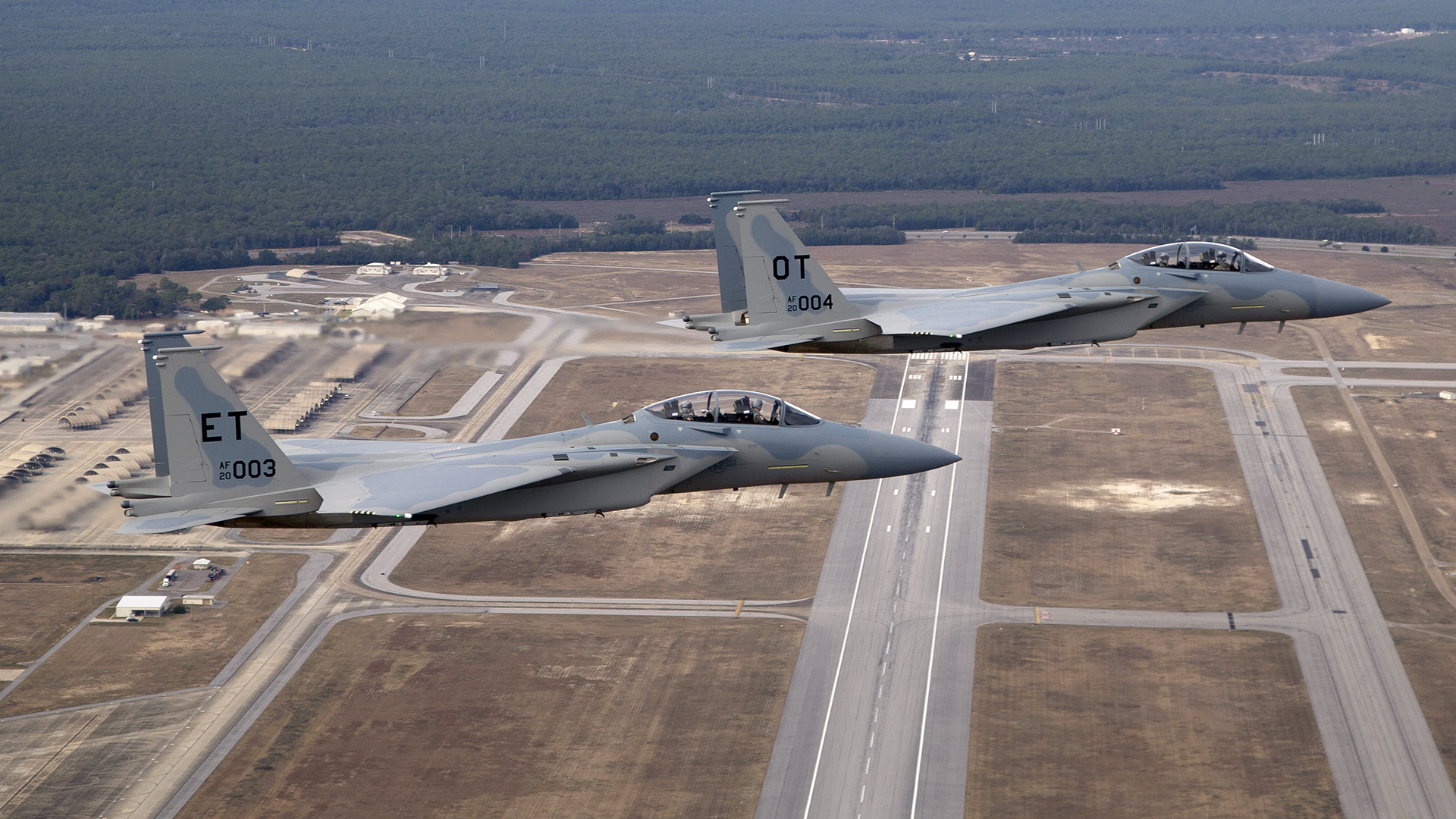
With 104 F-15EXs planned to be delivered (and as little as 98 if the USAF gets its way this year), a major cut from the previous minimum order of 144, and as commanders declare they want more of them even before they enter operational service, the debate over the future of F-15EX procurement is very much alive.
There are many arguments for the F-15EX and some against it. These really haven’t changed since we broke the story on the existence of the program over half a decade ago. Some of the biggest arguments for the EX are its long endurance, high performance, and big radar aperture, combined with its ability to carry a lot of weapons.
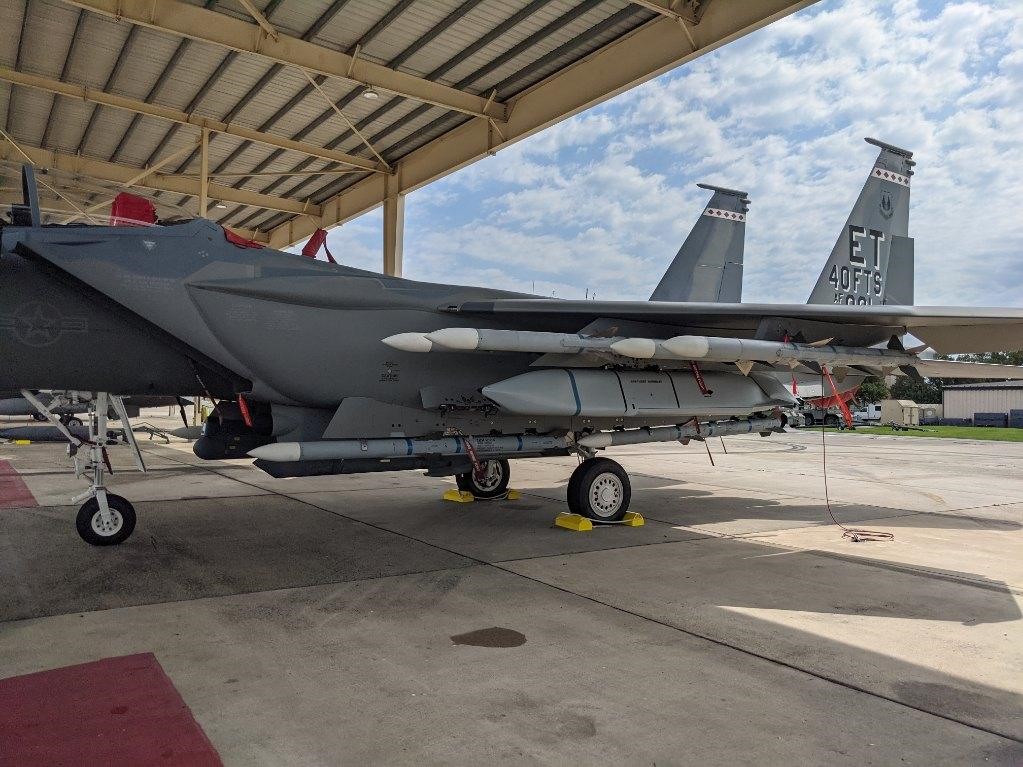
The EX can lug up to 12 AIM-120 AMRAAMs out of the box, which is 50% more than its Eagle predecessors. This upgrade is due to the activation of stations one and nine under its outer wings. Fly-by-wire controls largely made this possible with the introduction of the F-15SA for Saudi Arabia, which evolved into Qatar’s F-15QA and then into the F-15EX. New wing structures are also featured in the latest models, including the F-15QA and the F-15EX. You can read all about what it’s like to fly the latest Eagle iteration in this past special feature.
Nothing else in the USAF’s fighter inventory can employ 12 air-to-air missiles. The F-16 carries half that, while the F-35 is limited to four AIM-120s internally, with this hopefully growing to six in the coming years. F-35 configurations with more missiles carried externally have been depicted, but never realized operationally. Doing so would rob the stealth fighter of its greatest advantage and would further bog down its kinematic performance. Still, for some mission sets, this is worth pursuing and the F-35 could be a valuable player in this regard.
There is a concept for the F-15 family that employs ‘Amber Racks’ that could expand the F-15EX’s air-to-air missile capability even further, with up to 22 existing air-to-air missiles (AIM-9X and AIM-120) being carried at one time. Such a configuration has not been fully tested beyond conceptual fit checks. For the counter-drone and cruise missile mission set, this could be very attractive. Seeing as extreme maneuverability and acceleration are not as important for these types of operations, any performance penalty from the heavy missile load should be worth the trade in magazine depth.
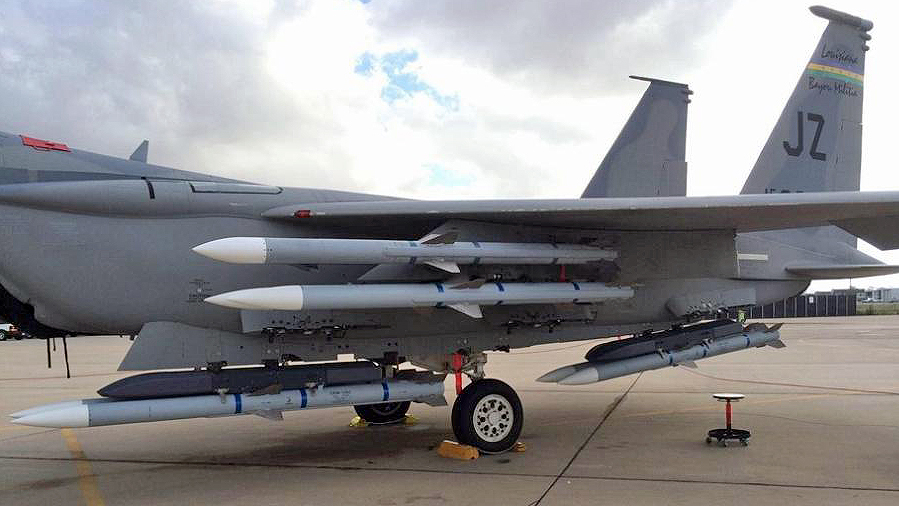
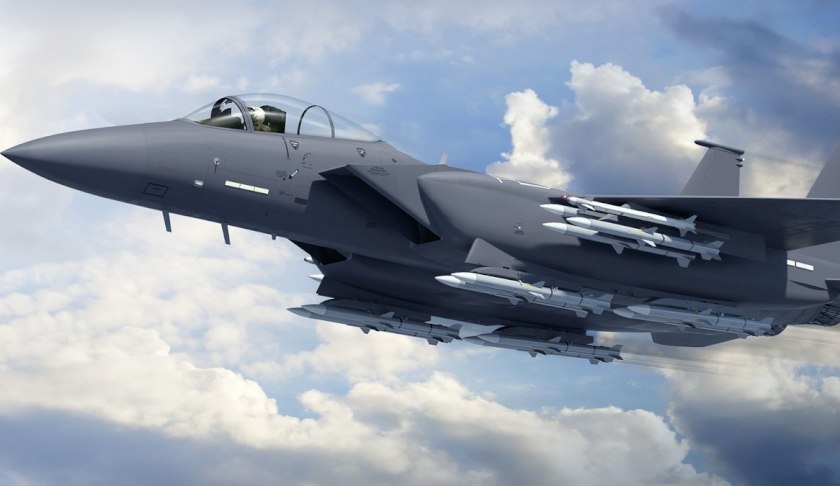
Future smaller air-to-air missiles that feature hit-to-kill capability could expand the Eagle II’s air-to-air arsenal even further, potentially drastically so. Under multiple concepts that are known to the public, a single AIM-120 could be replaced with two of these smaller intermediate-range missiles, although mounting and release limitations could play a factor in realizing this on every hardpoint.
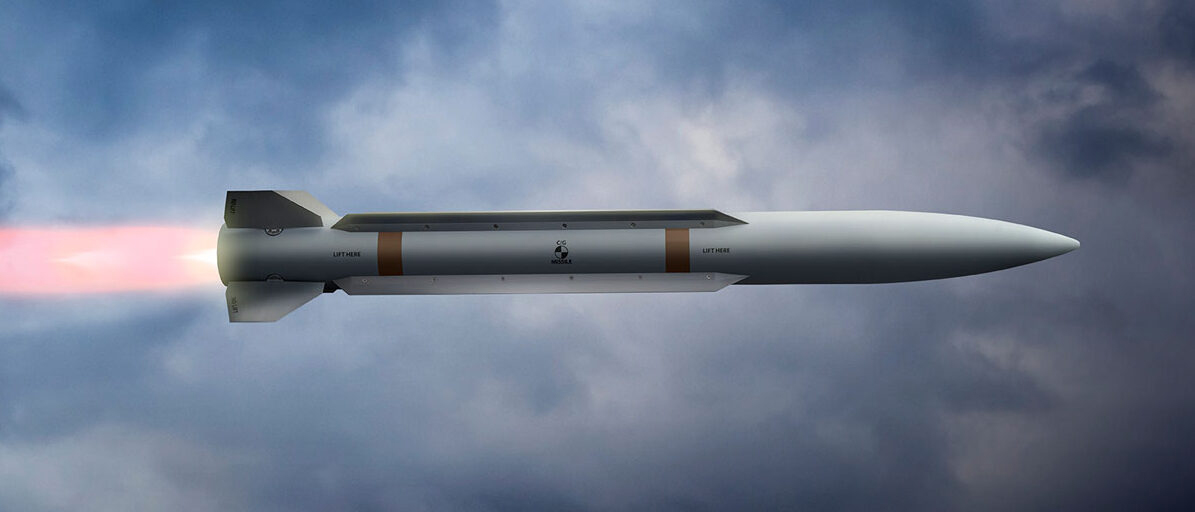
The F-15EX’s AN/APG-82 active electronically scanned array (AESA) radar is very large and it is the most powerful fighter AESA in service. It can spot smaller, low-flying targets at great distances and is better suited to ‘burn through’ electronic warfare. Many of the USAF F-15Es have received this same radar set, a feature that could have aided them in their rout of Iranian missiles and drones.
The F-15EX will also regularly carry the Legion Pod with its IRST-21 sensor, which allows for long-range detection of stealth targets, including cruise missiles, and can work collaboratively with the jet’s radar and other sensor systems to detect, classify, and engage the hardest to spot targets at long distances. This is another critical capability for confronting drones and cruise missiles that the F-15EX’s stealthy counterparts lack.
The EX features the latest in networking capabilities, and can be updated far more easily than its stealthy counterparts with new systems, allowing it to benefit from the sensors of all different platforms operating in the battlespace. The reverse is true too, operating forward, it can work to provide its sensor data to other shooters, as well as battle management staff far from the front lines. Its wide-area displays in the cockpit allow for all this information to be more easily ingested and acted upon. Having the option for another crewmember in the back seat with access to the same systems is also a huge plus for task-saturated jobs like trying to defend against waves of incoming missiles and drones. The bottom line is that it’s largely about situational awareness, and the F-15EX provides a degree of that which is especially well aligned with the defensive mission set.
The Strike Eagle family’s high endurance, which allows these jets to operate more independently of tanker assets and farther away from them, as well as loiter for relatively long periods of time, are also key attributes for setting up counter-air patrols focused on intercepting drones and cruise missiles. It’s a mission where persistence outweighs raw performance.
The F-15EX is a highly mature and reliable aircraft that should be ready to actually fly significantly more often than its stealthy counterparts. You can have the most capable jet on earth, but that doesn’t matter if the vast majority of them are stuck on the ground when you need them most, especially when they are supposed to stand between incoming drones and cruise missiles and U.S. forces or even the homeland.
During a war in the Pacific, this type of capability would be absolutely critical. The enemy will send cruise missiles and one-way attack drones over great distances at forces operating forward in-theater and especially at established bases. Having an asset that is best suited for deploying well between U.S. forces and the territory the threats would emerge from is very important. Having the Eagles in play will allow ground/surface-based defenses and less capable fighters with shorter range to pick off any ‘leakers.’ This is likely a driving factor in why Kadena Air Base in Okinawa now looks set to regain Eagle capability in the form of the F-15EX.
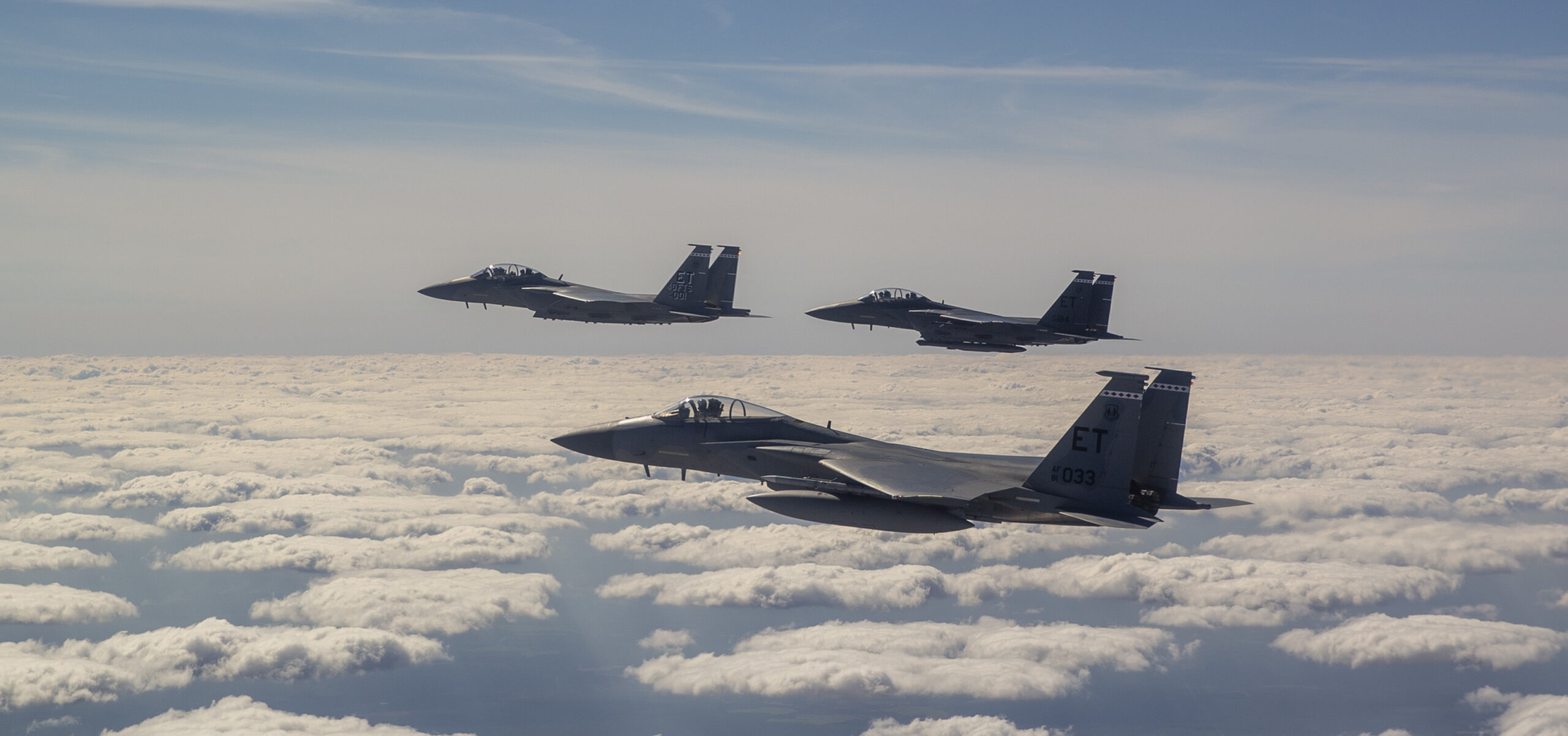
The F-15EX would be pivotal to providing this same capability to protect the homeland, which is the type’s top mission as of now. And elements of this critical task are identical to what we saw in the defense of Israel, with F-15Es providing a forward screen against the incoming ‘air-breathing’ portion of Iran’s barrage.
Cruise missile defense is a top priority now for the homeland air defense mission, and it’s a very challenging one. This is a primary reason why Air National Guard F-15s — and now F-16s — have been equipped with AESA radars, the F-15C/D being the first USAF fighter to possess this capability. Now throw in the rapidly evolving threat posed by drones, especially long-range one-way attack types, and the homeland air defense mission is only getting tougher, which has resulted in some outside-the-box thinking for testers. This includes adapting laser-guided rockets in the counter-cruise missile air-to-air role, which you can read all about here.
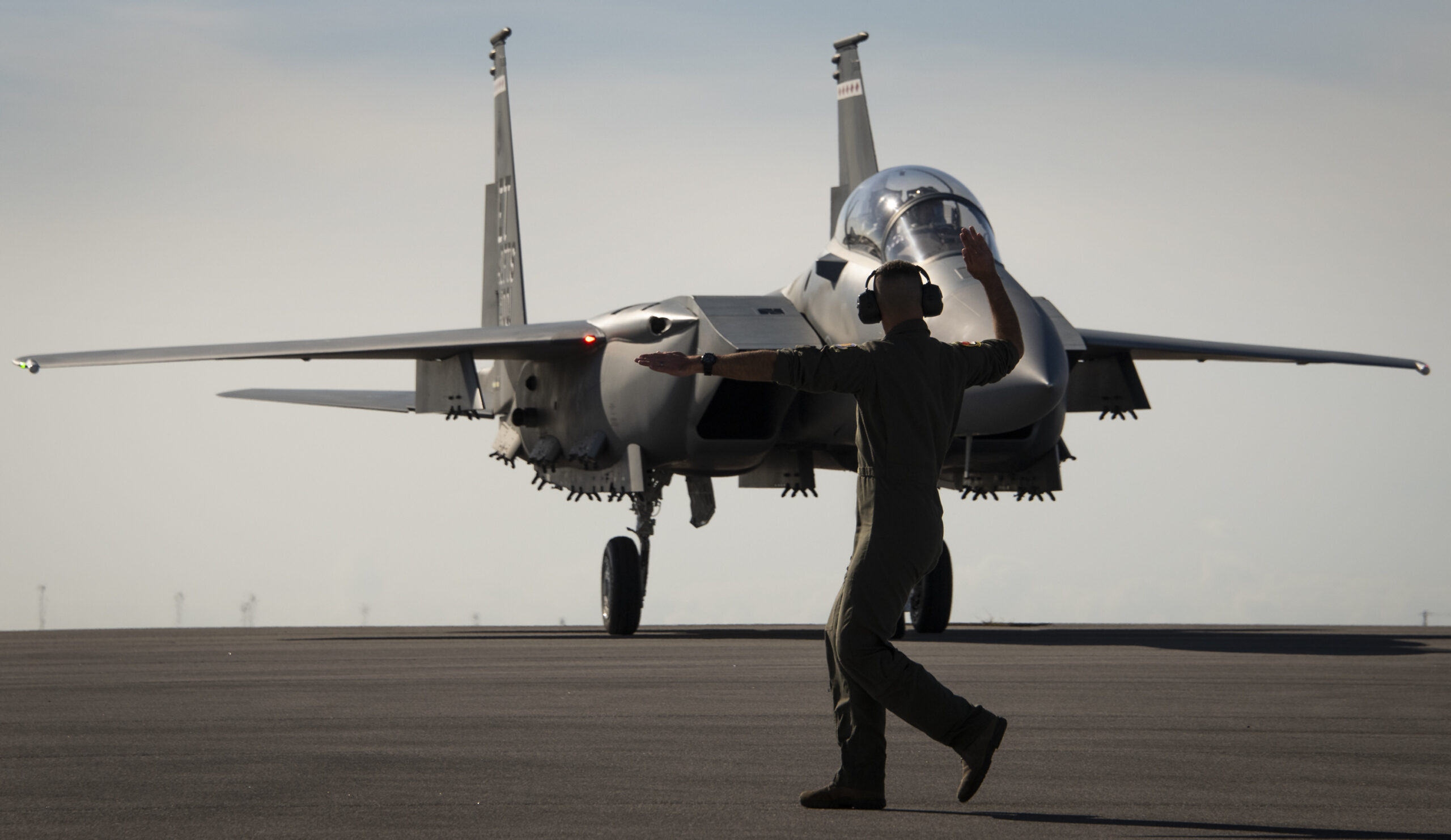
So, even as the F-15EX is equipped today, if the USAF wants to put up a defensive screen against incoming drones and cruise missiles as far away as is practical from the territory they are protecting, the Eagle II would be the undisputed king. Just look at what the F-15Es did without the F-15EX’s advantages to give you an idea of just how powerful the latter will be at this mission set.
F-15Es have been in extremely high demand for many years. Near continuously deployed from their forward operating base in Jordan and flying missions over Syria, these aircraft have been the on-call reaction force for U.S. forces in the region. Before last weekend, the F-15Es already had a counter-drone history, being the first USAF fighter to down a drone threatening U.S. forces in Syria years ago, an action that has been repeated multiple times since.
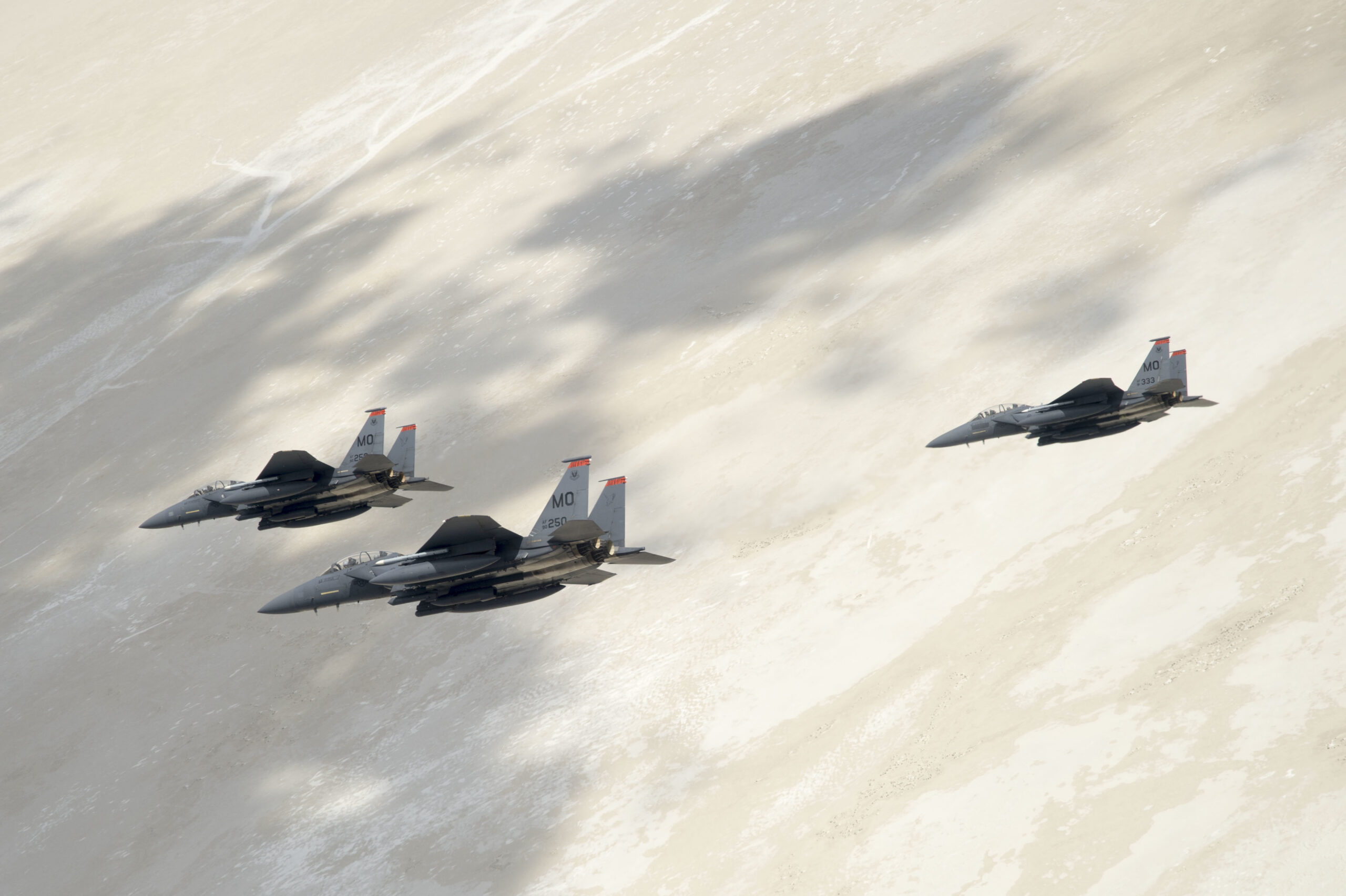
Now the USAF wants to retire roughly half of the 218 F-15Es in existence. This group of jets consists of roughly the first half of the F-15E’s production run. These aircraft retained the F100-PW-220 engines, with the latter half getting the more powerful -229 turbofans. These aircraft are being upgraded and have significant life left in them. The move is part of what the USAF says are a number of ‘tough decisions’ to realign funds, largely to future capabilities. The F-15EX will not directly replace these retired aircraft as these new aircraft, just 104 in number, are replacing other aircraft that are being retired, namely the F-15C/D, and remember, the F-15EX buy was already cut by nearly a third.
One has to wonder if F-15Es would have been available in significant numbers to play their critical role last weekend if half of the Strike Eagle fleet was already gone. That’s debatable, but there would be much less end strength in the community to provide similar services in future contingencies and the small F-15EX fleet will have its own existing missions to perform, especially the resource-intensive defense of the homeland’s airspace.
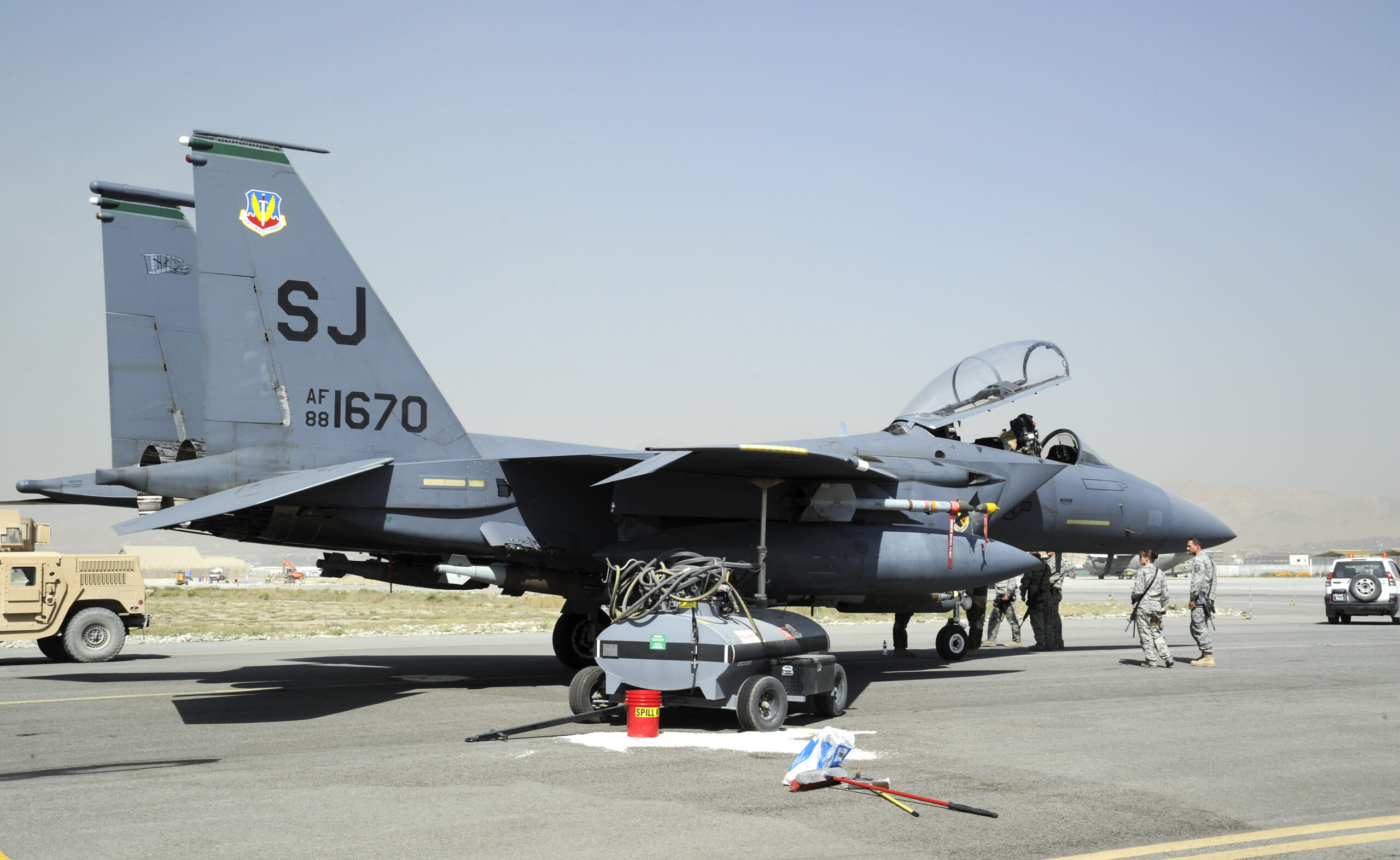
Regardless, what the F-15E did could only have been done better by the same crews flying F-15EXs. With massed standoff strikes being an increasingly prolific part of future warfare, with examples of this being highlighted daily in Ukraine, the Red Sea, and now between Iran and Israel, the Eagle II is the best airborne asset on earth to confront them.
Contact the author: tyler@twz.com
